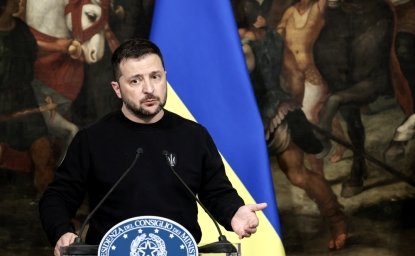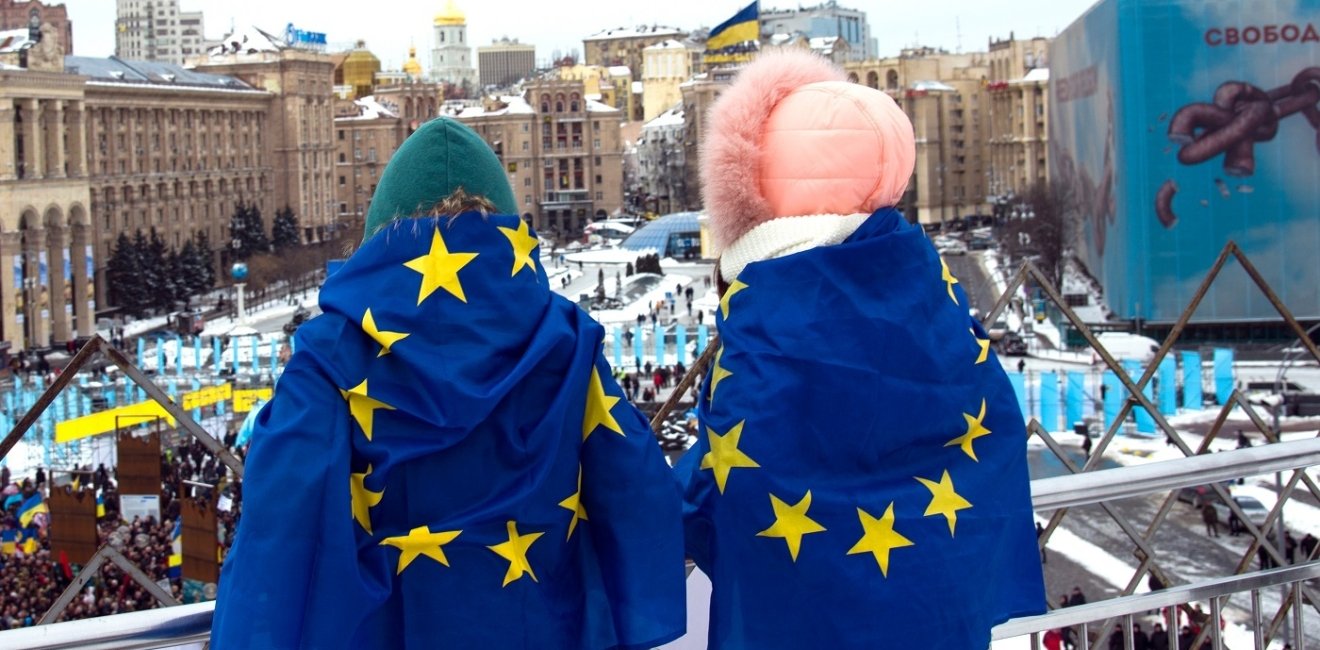
A blog of the Kennan Institute
This is the first in a series of three articles examining generational divides in wartime Ukraine. Read parts two and three.
The war in Ukraine has already claimed thousands of military and civilian lives. Its prosecution and impacts affect age groups differently. Most combat is carried out by men ages 18–40. Among refugees from Ukraine, three quarters are under 45 years old, while 28 percent of these are under 30. Those civilians most affected by the war are older, unwilling or unable to move from the combat zones.
Like other post-Soviet states, Ukraine was experiencing a significant generational divide on key political questions before the start of the war. How has the current war and its burdens affected Ukrainian attitudes? Here we examine front-line wartime identification with Ukraine, Russia, Europe, and the Soviet past.
Surveying Front-line Ukrainians
We organized a face-to-face survey of over 1,800 Ukrainians, half of whom were local residents and half of whom were internally displaced persons (IDPs), across three towns close to the regions where active fighting is taking place: Dnipro, Zaporizhzhia, and Poltava. The Kyiv International Institute of Sociology administered the survey in July 2022. Local residents were surveyed using a random selection of electoral precincts and IDPs by location sampling.
Generational Divides and Expectations
We decided to divide up the population generationally based on the history of Ukrainian independence: first, the Soviet generation (60 years and over), who were 30 years old when the Soviet Union collapsed; second, the transition generation (45–59 years old), who were educated and launched in the Soviet Union; third, the post-Soviet generation (30–44 years old), who were educated in independent Ukraine and have little memory of the USSR; and fourth, the young generation (18–29 years old) who have no direct memory or experience of the USSR.
We expected that Soviet identity and Russian cultural identification would be strongest among older generations and decline among younger Ukrainians, while Ukrainian national feeling and European identity would be strongest among the young.
Citizenship Identity
Across age groups, identification with the Ukrainian nation differed less in declaration than in meaning. Ninety-two percent of respondents age 44 and younger and 84 percent of older respondents identified with the Ukrainian nation. While respondents in most age groups identified as citizens of Ukraine first and foremost (around 67 percent across groups), those in the young generation (age 29 and younger) were somewhat more inclined to view Ukraine as the homeland of ethnic Ukrainians (14 percent vs. 6 percent among people age 30 and over), whereas more older people viewed Ukraine as homeland of many different ethnic groups (30 percent of respondents age 45 and older vs. 17 percent of younger respondents).
Identifying as European and Not with Russia
The majority of respondents strongly or somewhat identified as European, with a quarter strongly or somewhat disagreeing with this. On this question there were no pronounced age divides: over half of respondents of all ages saw themselves as European. A clear majority of respondents refused to identify with Russia and Russian culture, with less than one in five expressing identification. This last group was largely from the Soviet generation.
Enduring Soviet Identity
To probe the power of Soviet identification and affiliation, we posed two questions. The first asked whether respondents agreed with the statement that leaving the Soviet Union was a positive development for Ukraine. The second asked whether respondents agreed with the sentiment that all monuments to Lenin should be abolished.
In our sample, 53 percent strongly agreed that leaving the Soviet Union was a positive step, while over 15 percent somewhat agreed. By contrast, not quite 37 percent strongly agreed that monuments to Lenin should be abolished, while just over 10 percent somewhat agreed; combined, there was not a majority for removing these monuments.
As expected, there were notable generational divisions. Soviet identity was strongest among respondents age 60 and older (38 percent) and gradually decreased among younger age groups: 31 percent of respondents ages 45–59, 25 percent of respondents ages 30–44, and 19 percent of respondents ages 18–29 disagreed with demolishing all monuments to Lenin. Similarly, agreement with the statement that leaving the USSR was a positive step for the development of Ukraine gradually decreased from younger to older generation.
As we expected, older generations still feel more connections to Russian culture and the Soviet legacy. However, a clear majority of respondents independent of age identified as European. An overwhelming majority of respondents of all ages strongly identify with the Ukrainian nation and see their nation as a state for all citizens.
This text is based on research supported by the US National Science Foundation (award number 2226741).
The opinions expressed in this article are those solely of the author and do not reflect the views of the Kennan Institute.
Authors

Professor and Director, Program on History, Memory, and Conflict, Carter School for Peace and Conflict Resolution, George Mason University


Kennan Institute
The Kennan Institute is the premier US center for advanced research on Eurasia and the oldest and largest regional program at the Woodrow Wilson International Center for Scholars. The Kennan Institute is committed to improving American understanding of Russia, Ukraine, Central Asia, the South Caucasus, and the surrounding region though research and exchange. Read more

Explore More in Focus Ukraine
Browse Focus Ukraine
Building a Thriving Ukrainian Design Community Now

Ukraine Seeks to End the War. What's Wrong With the “Peace Scenarios”?


